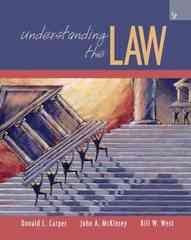Question
Question 1 Consider a set of two interconnected energy markets, where the output from one market is an input into the second market. Over time,
Question 1
Consider a set of two interconnected energy markets, where the output from one market is an input into the second market. Over time, these markets experience changes in the characteristics of and/or the constraints on the market. The changes (stages) are described below. From these events, for each stage one is to:
Define the market type that best describes the market at each stage; one's rationale for defining the market (e.g., a perfectly competitive, due to the many buyers and sellers and the identical good); and develop a supply/demand market graph showing the equilibrium price one would expect in the market from the market type and the information provided.
One's answer must include the graph, well-developed, well-labelled, well-drawn, and clearly showing the equilibrium price and quantity as well as the verbal explanation.
The change in the equilibrium outcome from one stage to the next stage (e.g., "demand in the market shifts to the right because of an increase in the number of consumers, while all else remains constant. This resulted in an increase in the quantity exchanged in the market and an increase in the price of the good). One should include a brief narrative for each stage.
Stage 1:This is a new energy source, with a single supplier and a small number of consumers. The market is geographically constrained. There are no substitutes for the energy good.
For stage 1, please define the market type, provide the appropriate market graph with the equilibrium price and quantity clearly defined. Provide the rationale and explain how the equilibrium market price and quantity are determined.
Stage 2: Demand for the energy good has increased substantially as consumers realize that the energy source can provide heat to their homes. There are now two suppliers.
For stage 2, again, define the market type, and provide the appropriate graph that clearly shows the change from stage 1 to stage 2 and explain the impact on price and quantity. Start with stage 1 graph and make the appropriate shifts and show the new equilibrium.
Stage 3: Technology has altered the market substantially - reducing the geographic constraint and allowing for competition in the market. There are now many suppliers of the good and demand continues to grow.
For stage 3, define the market type, provide the appropriate graph (s) showing the change and explain the impact on price and quantity from stage 2 to stage 3 and why this is the case.
Stage 4: Demand continues to increase as the geographic constraints are eliminated even more. There are still many suppliers. Added to this, a change in technology has made it possible to use this energy source as an input into the production of a traditional refined energy good - further expanding demand. The price of the traditional refined energy good is determined in a world market. The refined market is such that there are many suppliers and many buyers of the refined product and our first energy type is simply an input into this second market.
For stage 4, define both market types, provide appropriate graph(s) - one will need separate graphs for each market. For the original energy type graphically show the change and explain the impact on price and quantity from stage 3 to stage 4 and why this is the case. For energy type 2, define and explain the market type and the initial equilibrium that we would expect.
Stage 5:Bad news for energy markets 1 and 2. There has been research that shows the new energy input is accompanied by a large, measurable, negative externality. Regulation has been put in place to internalize the externality within the second market.
For stage 5, define both market types and provide appropriate graph (s) for each market equilibrium - incorporate the impacts of this regulation. Also, provide a short narrative that explains the impact from one market to the next.
Stage 6:Like almost every energy type through time there is always something that move a specific energy source towards obsolescence (e.g., wood became scarce and oil became more abundant). In this case, our first energy source has become increasingly scarce and there is a substitute energy good that is less expensive.
For stage 6, define both market types and provide appropriate graphs and narrative on price formation and market equilibrium for each market at this final stage.
Finally, construct a price quantity map over the 6 stages for the first energy source that appropriately shows the changes in price and quantity from stage to stage. Have time be on the x-axis and use two y-axes. On the lefthand axis have price and on the righthand axis have quantity. One will have two lines representing the changes over the time periods - one for price and one for quantity.
Step by Step Solution
There are 3 Steps involved in it
Step: 1

Get Instant Access to Expert-Tailored Solutions
See step-by-step solutions with expert insights and AI powered tools for academic success
Step: 2

Step: 3

Ace Your Homework with AI
Get the answers you need in no time with our AI-driven, step-by-step assistance
Get Started


